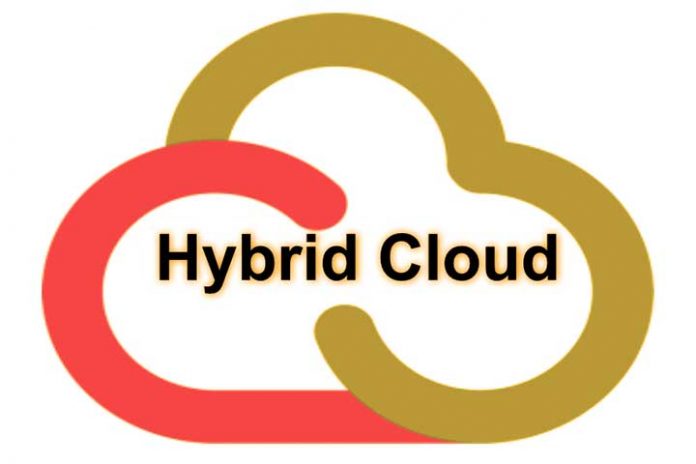A hybrid infrastructure can be an interesting option to complement existing IT investments or cover specific needs. But like any project impacting the IS, it is necessary to take into account its situation and its objectives so that this lever of growth does not become a brake.
Cloud and hybrid IT is the number one technology priority (followed by automation and big data analytics) for 51% of North American IT professionals. This is revealed by a survey conducted by SolarWinds, a Texas company specializing since 1999 in services improving business infrastructure.
Even if it is a study on a restricted and American panel, it has the merit of confirming a trend. At the same time, many hybrid platforms mixing on-premises infrastructures and public cloud infrastructures multiplied last year.
But companies are still too much in wishful thinking. They see the hybrid cloud only opportunistically. They have not yet developed a real strategy in this area. This attitude can be explained in particular by the fact that many organizations may not have fully understood the problems of the hybrid cloud.
1. Have you clearly defined your cloud migration strategy?
This question isn’t just about hybrid clouds. Whatever the migration project, too many companies forget to specify their strategy, certainly because they are not accompanied by partners specialized in this field.
Building a cloud strategy involves addressing four points:
- Its needs: this first step consists in particular in evaluating the opportunities and threats and thus establishing an order of priority;
- The identification of services and applications in the cloud: their selection does little to improve your IS;
- Adapting your private infrastructure: Hybrid is not just about plugging into a provider’s platform, the private infrastructure needs to run some form of cloud computing services;
- The implementation of retro planning in order to establish a coherent and exhaustive order.
Also Read: Secure The Cloud With Best Practices
2. What are the main benefits of the hybrid cloud?
The growing interest in the cloud in general and the hybrid in particular is leading more and more companies to take an interest in it. But is this option right for your business? What are the real benefits for economic activity? Helped by a partner specializing in these issues, companies must weigh the pros and cons.
But it’s a fact: by mixing independent and distinct elements (private and public cloud), the hybrid cloud has different advantages capable of convincing some SMEs.
- First, the hybrid cloud makes it possible to have more innovative and productive solutions than those deployed locally.
- Secondly, the part in the public cloud is perfectly suited to very high load increases, but limited in time (for example, a seasonal or event-driven peak in activity). This scalability has the third major advantage: you only pay for this one-time activity (possibility of invoicing by the second).
3. Which applications or functions should migrate to hybrid as a priority?
Identifying the applications that really matter to the business is critical. Different scenarios may arise depending on the activity:
- Applications managing very sensitive information: it should be kept in the private cloud while implementing an appropriate level of security;
- Specific business applications (or historical layers of the IS): difficult to “compatible” with the cloud (not recent software, complicated maintenance, etc.), it is wise to keep them in your private cloud, or even on-premise.
- Cloud-native software: using a public cloud can be beneficial if you want to benefit, for example, from the most innovative versions.
4. Is my company able to control the security of this mixed infrastructure?
Mastering the security of a private cloud is not within the reach of all companies. And the connections of the IS with a public cloud platform can make it even more difficult to manage flows and users.
The confidentiality of sensitive information and the protection of personal data are at stake. Remember that with the entry into force of the GDPR at the end of May 2018, companies and service providers become jointly responsible for the processing of private data. It is therefore essential to establish precisely the obligations of each party in the contracts.
Moving to a hybrid model also requires new tools and new security practices. Raising employee awareness of digital hygiene and security audits (of private and public clouds) conducted at least once a year are essential.
5. Why do you have to take your time?
Move slowly! Learn from your own experience. To avoid unpleasant surprises or a migration that turns into a disaster, it is indeed preferable to start with one or two perfectly mastered applications. Also be sure to properly manage all instance acquisition systems to avoid ending up with inactive VMs which represent a financial cost for the company.
He also recommended relying on the experience of cloud providers, but also specialized partners to guide you through the process.
Also Read: How The Cloud Supports Modern Businesses


